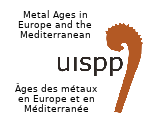The archaeological site of El Castrejón de Capote is a Late Iron Age settlement occupied from its foundation in the 4th century until its destruction in the 1st century BC. Archaeological investigations conducted in the 1990s unearth at least three phases, with an extensive complex of domestic, storage, and ritual structures organized around two main streets and several alleys. Thousands of ceramic vessels were discovered within these structures, largely in situ. This communication aims to characterize the domestic economies during Capote's final phase (2nd-1st centuries BCE), a time when the site was progressively integrated into the Roman sphere, by leveraging this vast ceramic repertoire and employing network analysis tools.
Considering pottery attributes such as type, shape, function, and provenance, our approach include mapping the spatial distribution of ceramics within the settlement, identifying clusters with similar characteristics and examining connections between different pottery types found in houses and warehouses, as well as explore how ceramics were used in different contexts and their connections with other artifacts or activities. Through network representation, our objective is to use the ceramic assemblage as a proxy for understanding changes and continuities in consumption patterns. This will help us to better understand cross-cultural influence on Iron Age local economies and regional dynamics in areas recently integrated into the Roman network.

 PDF version
PDF version
